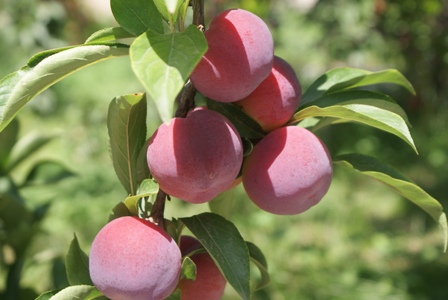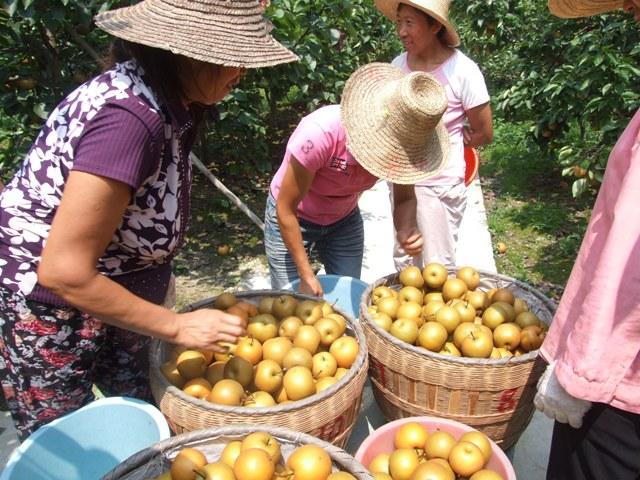Horticulture is defined as the cultivation of plants, flowers, trees, vegetables, fruits and related industries such as greenhouse equipment, biological control, substrate, cold rooms, etc. Thanks to the richness of its soil and the diversity of its climate, China is characterized by its big potential to produce a variety of high-quality fruits, vegetables, and flowers for domestic consumption and export, through its tropical, subtropical and temperate. However, China is facing a growing shortage of means of production such as energy, land, water and main labor. It is also important for China to improve its production methods, therefore, there is a huge need of foreign assistance in order to gain knowledge and technology to exploit its potential.
Market Trends in China
 With rising living standards and the expansion of the middle class, imports of horticultural products in China have also increased considerably in recent years. Chinese consumers are becoming more and pickier regarding the quality and variety of products offered to them. Due to the low technology and limited knowledge of the culture, farmers are still contributing to enhancing the horticulture sector. With the support of local government, many companies are now investing in this industry. Moreover, one of the current priorities of the Chinese government is to increase the food supply, the food security and raise the level of income of the farmers.
With rising living standards and the expansion of the middle class, imports of horticultural products in China have also increased considerably in recent years. Chinese consumers are becoming more and pickier regarding the quality and variety of products offered to them. Due to the low technology and limited knowledge of the culture, farmers are still contributing to enhancing the horticulture sector. With the support of local government, many companies are now investing in this industry. Moreover, one of the current priorities of the Chinese government is to increase the food supply, the food security and raise the level of income of the farmers.
Many horticultural products such as vegetables and fruits to export are of great value and, therefore, many Chinese farmers are diversifying into the production of traditional crops for horticultural products such as basic grains with wheat, rice, and maize. Today, the main fruits produced in China are citrus, melon, apple, pear, grape, banana, pineapple, litchi and longan. And the main vegetables that are cultivated in China, are tomatoes, mushrooms, Chinese and European cabbage, Chinese radish, beans, peppers, asparagus, potatoes, and onions. China also possesses a large variety of flowers and plants such as potted plants and other ornamental plants, cut flowers etc.
Because of the lack of post-harvest technologies, equipment, and advanced production in processing horticultural products, the production losses in China are still very high. The latest estimates data comes from the Chinese Ministries of Agriculture and Trade, saying that up to 1/3 of horticultural products produced annually are lost before consumption.
A Lack of Industrial Development
Despite the fact that China is the largest producer and consumer of horticultural products, its horticultural industry is almost late and is largely insufficient to properly support the inter-provincial trade and export, particularly for perishable products. The Chinese horticulture system lacks critical infrastructure, with poor distribution channels, poor marketing skills and transportation, and a lack of advanced production technology.
As in many other agricultural sectors, the horticulture industry in China is extremely complex, which is characterized by a lack of close connection between production, consumption, and frequent government assistance.
The Chinese horticulture is often directed in a primitive way: with a small parcel, soil and without temperature control. Products are grown in greenhouses, which are plastic tunnels, also called solar greenhouse. China is today facing growing domestic market demand, among others population growth, with the increase of purchasing power and quality demand (food, different varieties); the decrease of agricultural land (urbanization, desertification), and cultivation issues (drought, plant disease etc), the Chinese Horticulture industry still has room for improvement.
The Chinese government: investment and development plans
To increase the quality and quantity of production, the Chinese government decides to take radical measures to achieve its objectives. Indeed, it gives high priority for the breeding, the production technology, the biological control, and the logistics of the industry. In order to strengthen the agriculture industry in China, the Chinese government is looking for new solutions from foreign companies by promoting the knowledge transfer to Chinese companies.
Many provinces and cities in China saw the need to invest in the horticulture industry. this industry requires big budgets and specific facilities. among Chinese provinces and cities, who pitched in the horticulture industry, that region could be listed above:
The Shandong Province
Shandong province is the largest fruit and vegetable producing area in China. It represents great opportunities for companies every part of the chain.
The Yunnan Province
Yunnan Province, who wants to become the central flower region of Southeast Asia, are with its new Kunming airport, is taking a lot of measures to increase the investment opportunities.
The Sichuan Province
The National Department of Agriculture greatly supports this region, because of a strong desire to expand its floriculture sector.
The Dalian City
The Chinese government is also supporting this city which desire is to become a hub for the flower industry of northern China.
The Tianjin Province
It is also supported by the local government and many Dutch companies are already involved in the development of large greenhouse projects in this province.
To know more about China’s market, follow us on our social medias, or contact us at dx@daxueconsulting.com
Here is our latest post about the Pine Nuts Industry:
Read what we found out about #pinenuts in #China: https://t.co/Ww8fGn73gr pic.twitter.com/tUUFHk1F0n
— Daxue Consulting (@DaxueConsulting) December 29, 2015




